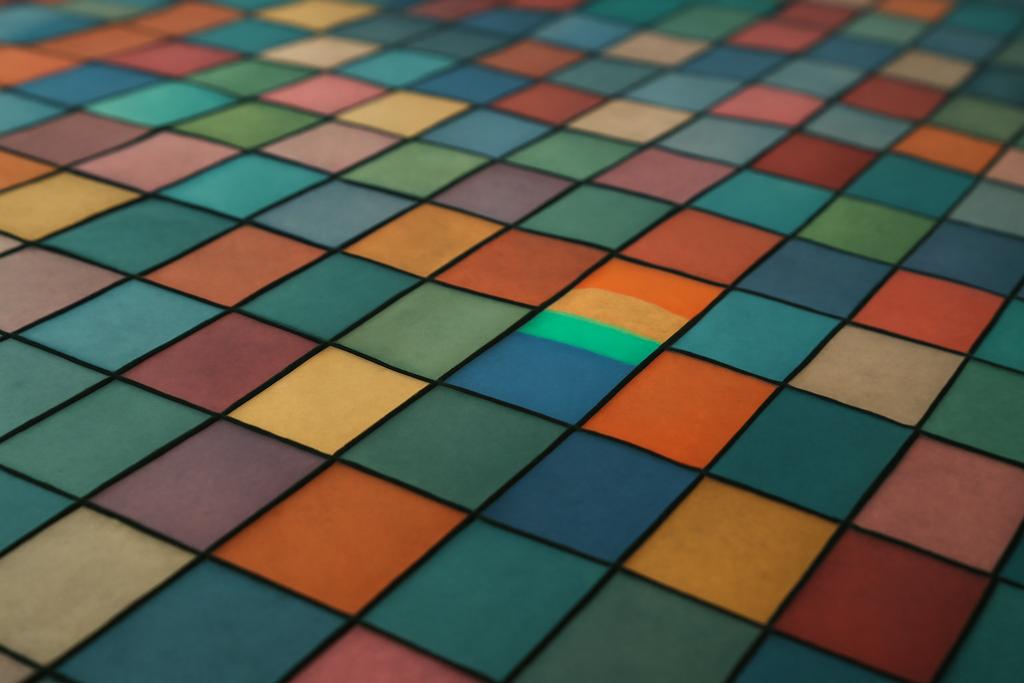The Unexpected Order in a Sea of Colors
Picture an infinite canvas stretching in every direction — a vast Euclidean space where points can be painted in any number of colors. Now, imagine you’re tasked with coloring this endless expanse, using as many hues as you like, without creating a perfect rectangle all in one color or a rectangle where every corner shines in a different shade. It sounds like a challenge tailor-made to defeat any pattern-seeker, right?
Surprisingly, a recent breakthrough by mathematicians Gennian Ge, Yang Shu, and Zixiang Xu from Capital Normal University, University of Science and Technology of China, and the Institute for Basic Science in South Korea, reveals that no matter how you color this infinite space, certain rectangles inevitably emerge — either glowing monochromatically or dazzling with every corner a unique color. This discovery settles a long-standing question in the realm of Euclidean Ramsey theory, a field that explores the unavoidable appearance of order within chaos.
Ramsey Theory’s Geometric Heartbeat
Ramsey theory is often described as the mathematics of inevitability. It tells us that in large enough or complex enough systems, patterns must appear. Originally developed in the context of graphs and numbers, it has since blossomed into a rich tapestry connecting combinatorics, geometry, and logic.
Euclidean Ramsey theory takes this idea into continuous spaces — the familiar geometry of our world — asking: if you color every point in space with a finite palette, can you avoid creating certain geometric shapes all in one color? Or, more intriguingly, can you avoid shapes where every point is differently colored? The answer, as it turns out, is no.
Earlier work showed that squares and some special rectangles with rational side ratios have this “canonical Ramsey property”: beyond a certain dimension, no matter how you color the space, you will find either a monochromatic or a rainbow (all differently colored) copy of these shapes. But what about every rectangle, regardless of its proportions?
Cracking the Rectangle Code
The new paper by Ge, Shu, and Xu answers this with a resounding yes. Every rectangle, no matter how skewed or stretched, exhibits this canonical Ramsey property. This means that if you look at a high enough dimension — a space with enough directions to move in — you cannot escape finding a rectangle that is either all one color or a perfect rainbow.
Why is this surprising? Because rectangles come in infinitely many shapes, and their side lengths can relate in irrational ways that defy neat algebraic descriptions. Previous methods relied heavily on rational relationships between sides, which allowed mathematicians to use certain algebraic tools. The new proof breaks free from these constraints.
The Magic of Product Structures and Simplexes
At the heart of their proof lies a clever structural reduction. Instead of tackling the problem head-on, the researchers identify a hidden product configuration inside the Euclidean space — a kind of geometric scaffold made from simpler shapes called simplexes and polygonal paths. These building blocks have well-understood Ramsey properties.
By showing that the coloring complexity within this scaffold is bounded, they can apply powerful theorems about simplexes — shapes like triangles but in higher dimensions — and then amplify these local patterns into global ones. This approach is akin to finding a repeating motif in a complex tapestry and using it to predict the entire pattern.
Why Dimensions Matter More Than Colors
One of the most elegant aspects of this result is the dimension-independence phenomenon. The dimension of the space needed to guarantee these monochromatic or rainbow rectangles depends only on the rectangle’s shape, not on how many colors you use. Whether you paint the space with four colors or a hundred, the threshold dimension remains the same.
This defies intuition. You might expect that more colors would make it easier to avoid monochromatic shapes, but the geometry of high-dimensional space forces order to emerge regardless.
Beyond Rectangles: The Road Ahead
While this result closes a major chapter for rectangles, it opens new questions. What about more complex shapes like parallelograms or arbitrary triangles? The canonical Ramsey property for all triangles remains one of the most tantalizing open problems in Euclidean Gallai-Ramsey theory.
Extending these ideas will require fresh insights and new mathematical tools. The current proof’s reliance on product structures and simplex theorems might not directly translate to these more general shapes, inviting mathematicians to explore uncharted territory.
Why Should We Care?
At first glance, this might seem like an abstract puzzle about coloring points in space. But the implications ripple through fields that rely on understanding patterns in complex systems — from computer science and information theory to physics and biology.
Recognizing that certain configurations are unavoidable, no matter how chaotic or colorful a system appears, helps us grasp the fundamental limits of randomness and structure. It’s a reminder that beneath apparent disorder, the universe often hides a deep and beautiful order waiting to be discovered.
In Closing
The work of Ge, Shu, and Xu is a testament to the power of mathematical creativity. By weaving together classical theorems and innovative structural ideas, they have illuminated a corner of geometry that was shrouded in mystery. Their proof not only settles a decades-old question but also enriches our understanding of how patterns emerge in the infinite canvas of space.
Next time you look at a simple rectangle, remember: in the vastness of high-dimensional space, it’s impossible to hide from the colors — whether they blend into one or burst into a rainbow.










